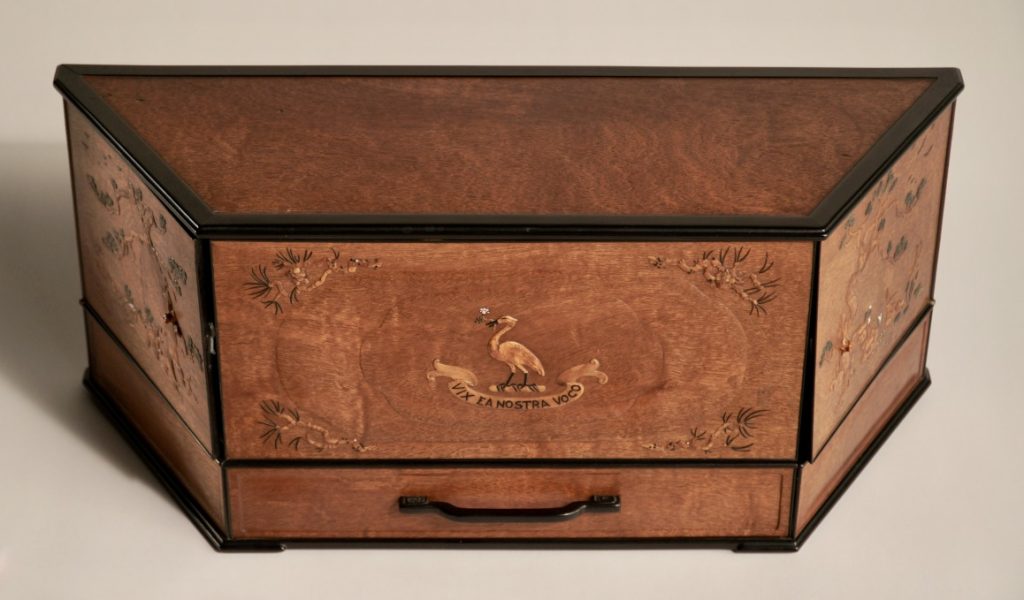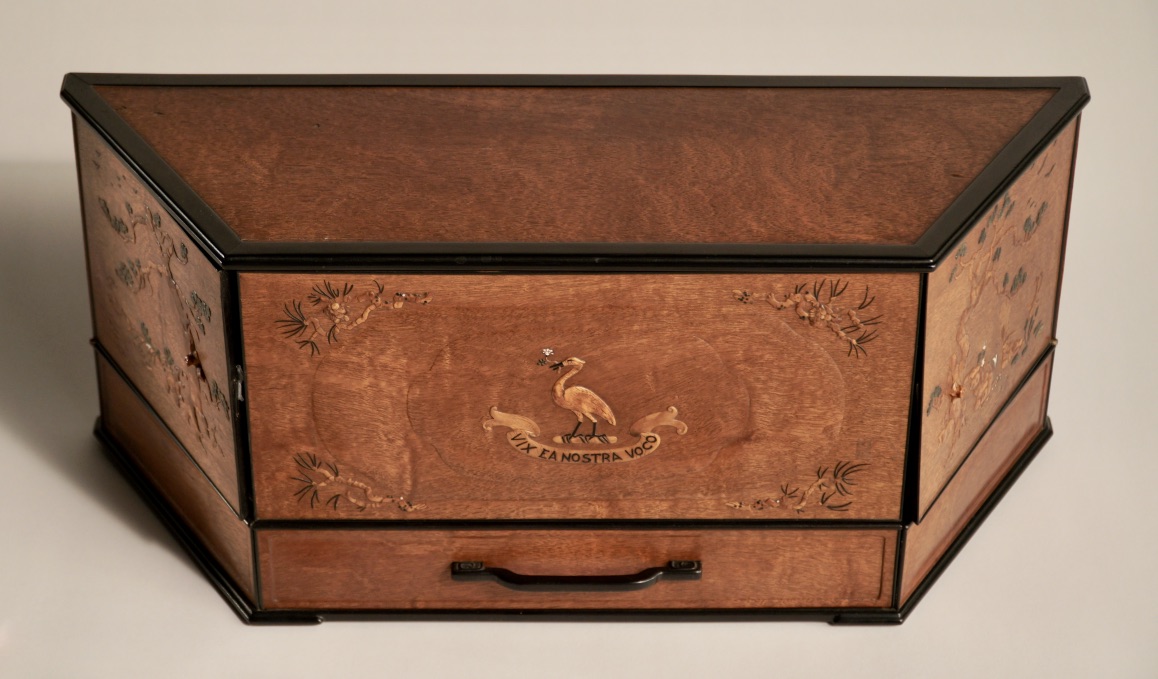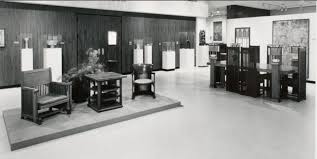by Elizabeth Harris
As I have been leading tours of The Gamble House for years, I have become especially interested in imagining the Gamble family members as they went about their actual lives in this marvelous house with its extraordinary furniture.
Desks were vitally important in those days. Just as most of us today use computers and frequently travel with our cell phones and laptops, many people at that time regularly handled correspondence at a desk. There are four Greene and Greene-designed desks in the House: one, in the first floor guest room, is of bird’s eye maple with intricate inlay of sterling silver, vermillion wood, and semiprecious stones. The others are Mary’s, in Mr. and Mrs. Gamble’s bedroom; Julia’s in her room, and the desk in the living room. In the Den there was David’s roll-top desk, very similar to the one presently there. Also, it is quite likely that there was a desk in the bedroom upstairs that Clarence used.
To get a lovely sense of what it would have been like to live just at the edge of the Arroyo at 4 Westmoreland Place, let’s read from Aunt Julia’s letter to Clarence on March 2,1974: “I am sitting here with my windows and door open, the quail are calling, birds singing and the neighbor’s parrot squawking.” We can almost hear the various sounds of nature carried in by the refreshing breeze.
1914 was the year the living room desk and letterbox were made for the Gambles. Rather far from the sight of most visitors, this desk is the perfect example of an object that captures the spirit of The Gamble House, which was created under the principle of “form follows function.” Both the structure and the furniture are useful as well as beautiful. Used to handle correspondence, the desk was crafted with such care and meaning that it is, as former Gamble House curator Anne Mallek states in The Gamble House: Building Paradise in California, “a testimony to the significance the Gambles ascribed to the real and frequent communications that went out to family and friends as well as to the educational, charitable, and religious organizations” that were so important to both Mary and David.

The letter box, commissioned after the House and other furnishings had been built, has special significance for the family. The beautifully inlaid surfaces reflected the arts and scenery of Japan, not only personally significant for the Gambles but also a very important influence in the Greenes’ work.
The story of how the family crest (the stork or crane with the rose in its beak) was adapted as a motif in David and Mary’s home in Pasadena is an absorbing one.
Again we are indebted to Anne Mallek for her research on this. This house was built one year after the death of Sir David Gamble, a first cousin of our David. David and Sir David had been together in England in 1902 when Mary and David, Cecil, Sidney and Clarence made an extended visit there and also when David’s older sister Mary Elizabeth Gamble died. David and Sir David had shared interests in business and entrepreneurship as well as in charitable work and working in their communities.
Sir David had been given a crest in 1897 when he had been granted his baronetcy. The design included a stork, on a mount between two trefoils, holding a rose in its beak. While participating in creating the design Sir David had likely been inspired by the city seal of Liverpool, a great, industrial city where he had been intimately involved. This seal featured a cormorant or liver bird holding a sprig of “laver” or seaweed. For his crest, the cormorant became the stork, and the sprig of seaweed, a rose. Later, in 1907, here in Pasadena, the stork became a crane. So we can see that using this crest shows the links of the two families.
I enjoy envisioning Mary sitting at this exquisite new desk to write letters to Clarence. On July 26,1914, she wrote, “We have put some ferns around the front of the garage, at each corner. Our garden is very attractive now. We have not seen rabbits or squirrels the last few days.” And on August 14, when the Gambles are realizing that, with the onset of war they can no longer contemplate a trip overseas:
“We can’t go to the orient across the Pacific because there are no good steamers now from Shanghai and Hong Kong on to India and even Hong Kong does not seem to be safe. There are only British and German lines to India, I believe. No bookings whatever are promised by the SS companies.” Mary has been reading about the ‘situation in the European countries.”
Another vision I have is of Mary in 1921 writing to her son about an exciting visit she had from Julia Morgan, architect of Hearst Caste (which she had begun working on in 1919), who most likely sat in the living room with Mary Gamble. She writes: “The architect of the YW, * Miss Morgan, was here yesterday and I had to meet her instead of going to a tea [at Mrs. Culbertson’s this would have been Mrs. James Culbertson.]”
The inlaid family crest and the motto Vix Ea Nostra Voco (“I scarcely call these things our own”) refer to David’s and Mary’s belief that in their way of life they had a responsibility to work in and to improve their community through personal stewardship and financial support. This letter box also reminds us that “in this progressive and changeable world our ownership of things is temporary. That which is permanent is what is shared and allowed to continue after us.”
* The Pasadena YWCA, located on Marengo in the Civic Center, which was built in 1921.
Originally published in The Greene Sheet, February 2017



Leave a Reply